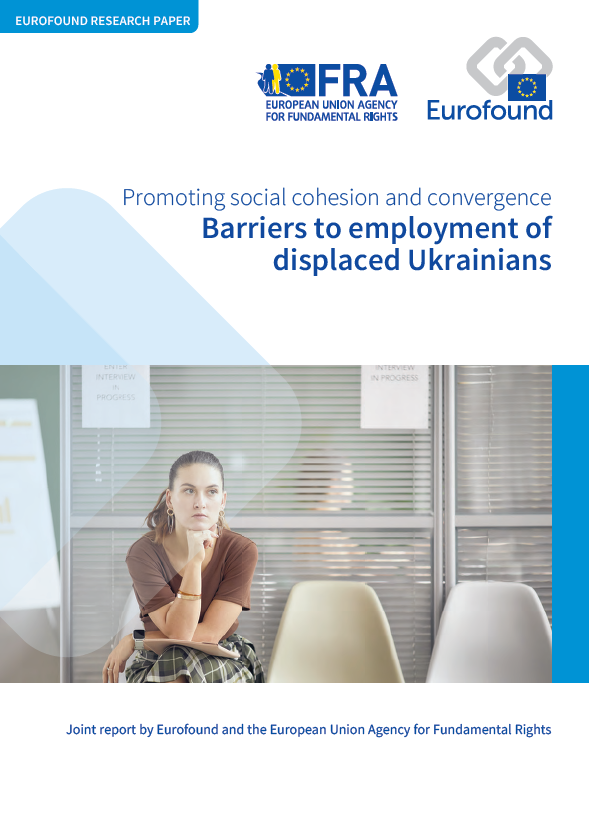
W odpowiedzi na rosyjską wojnę przeciwko Ukrainie UE uruchomiła dyrektywę w sprawie tymczasowej ochrony dla osób, które uciekły z kraju, umożliwiając im osiedlenie się w UE oraz dostęp do podstawowych usług publicznych i rynku pracy. Do wiosny 2023 r. ponad 4,5 mln osób skorzystało z dyrektywy w sprawie tymczasowej ochrony lub podobnych krajowych systemów ochrony w UE. W 2022 r. Agencja Praw Podstawowych Unii Europejskiej przeprowadziła badanie internetowe wśród osób przesiedlonych z Ukrainy. Eurofound przeanalizował wyniki badania dotyczące ich doświadczeń w zakresie ubiegania się o dostęp do zatrudnienia. W niniejszym dokumencie zwrócono uwagę na główne przeszkody, z którymi zmagają się wysiedleńcy, i przedstawiono sposoby ułatwienia ich włączenia społecznego.
The research paper contains the following lists of tables and figures.
List of tables
- Table 1: Key characteristics of the online survey respondents (numbers and (weighted) proportions)
- Table 2: Respondents’ reasons for not being in paid employment
List of figures
- Figure 1: Host language proficiency of the respondents, by country (%, weighted)
- Figure 2: Contract types among respondents in employment in their host country (%, weighted)
- Figure 3: Barriers reported by respondents who have looked for a job in a host country (%, weighted)
- Figure 4: Probability of experiencing at least one barrier while seeking employment, by gender, age group, education level, financial situation and language skills
- Figure 5: Proportion of respondents who experienced labour market barriers while seeking employment, by barrier and age group (%)
- Figure 6: Proportion of respondents who experienced labour market barriers while seeking employment, by barrier and educational attainment (%)
- Figure 7: Share of respondents who mentioned self-reported barriers among those not in paid work, by country (%)
- Figure 8: Share of self-reported barriers among those not in paid work, by barrier and age category (%)
- Figure 9: Share of self-reported barriers among those respondents not in paid work, by barrier and educational attainment (%)
- Figure 10: Probability of perceiving at least one barrier to entering the labour market, by age, educational attainment, gender, financial situation and language skill groups
- Number of pages
-
32
- Reference nº
-
EF23015
- ISBN
-
978-92-897-2333-6
- Catalogue nº
-
TJ-03-23-207-EN-N
- DOI
-
10.2806/216178
- Permalink
Cite this publication
Eurofound and the European Union Agency for Fundamental Rights (2023), Barriers to employment of displaced Ukrainians, Eurofound research paper, Publications Office of the European Union, Luxembourg.